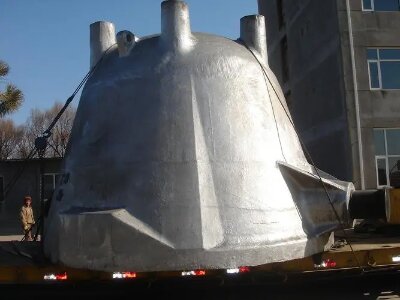- Carbon steel automobile brake system parts casting
- Auto parts carbon steel casting
- Precision casting of carbon steel auto brake parts
- Automobile carbon steel precision parts castings
- Carbon Steel Ship Castings
- Carbon Steel Auto Parts Precision Casting
- Automobile stainless steel hinge precision casting
- Stainless Steel Auto Parts Castings
- Automobile stainless steel gimbal precision casting
- Stainless steel auto spring seat precision casting
- Stainless Steel Brake Disc Casting Processing
- Stainless steel hinge precision casting
- Alloy Steel Ship Castings
- Railway Press Plate Alloy Steel Castings
- Alloy auto parts precision castings
- Heat-Resistant Steel Centrifugal Cast Tube
- Alloy Steel Auto Parts Precision Castings
- Automobile drive shaft alloy steel precision casting
- Knocking wrench precision casting
- Axle parts casting
- Shift Shaft Precision Castings
- Railway accessories casting
- Automobile suspension lug castings
- Auto parts precision castings

Customized Large Cast Steel Slag Pot
Cast steel slag pot is a kind of equipment used to store and process molten metal and other high temperature liquids. Its main principle of use is to pour high-temperature liquid into the slag pot, and through natural cooling and solidification, the metal slag and smelting waste are separated, so as to realize effective waste treatment and metal reuse.
Cast steel slag pots are usually widely used in steelmaking, metallurgy, casting, mining and other fields. Its main advantages include high strength, high temperature resistance, corrosion resistance, good sealing, easy cleaning and maintenance, etc. In addition, the design and manufacture of cast steel slag pots can be customized according to different application scenarios and needs to meet specific requirements of customers.
The life of cast steel slag pot is affected by many factors, including material quality, design and manufacturing quality, use environment, operation method, maintenance and so on. In order to ensure the service life and safety of the cast steel slag pot, regular inspection and maintenance are required to detect and deal with damage and corrosion on the surface of the pot in time.
During the use of cast steel slag pot, there may be some problems:
● The sealing performance of the slag pot is not good, resulting in slag leakage or poor air circulation inside the slag pot.
● The wall thickness of the slag pot is uneven, resulting in the deformation of the slag pot or the reduction of the bearing capacity of the slag pot.
● The accumulated slag layer inside the slag pot is too thick, which affects the service life and efficiency of the slag pot.
● The quality of the material of the slag pot is not good, and it is prone to problems such as cracks, water leakage, and corrosion.
In order to solve these problems, the following measures can be taken:
● Test and detect the sealing performance of the slag pot, find out and deal with the problem of slag leakage in time. At the same time, equipment such as thermometers and pressure gauges can be installed on the slag pot to monitor the temperature and pressure changes inside the slag pot.
● Check and test the wall thickness of the slag pot to detect and deal with deformation or load-bearing capacity decline in time. It can be solved by reinforcing materials or replacing the slag pot.
● Regularly clean and maintain the inside of the slag pot to avoid the influence of too thick slag layer on the slag pot. It can be cleaned with high-pressure water gun and other equipment.
● Choose good quality slag pot materials to avoid problems such as cracks, water leakage, and corrosion. At the same time, anti-corrosion treatment can be carried out on the surface of the slag pot to improve its corrosion resistance.